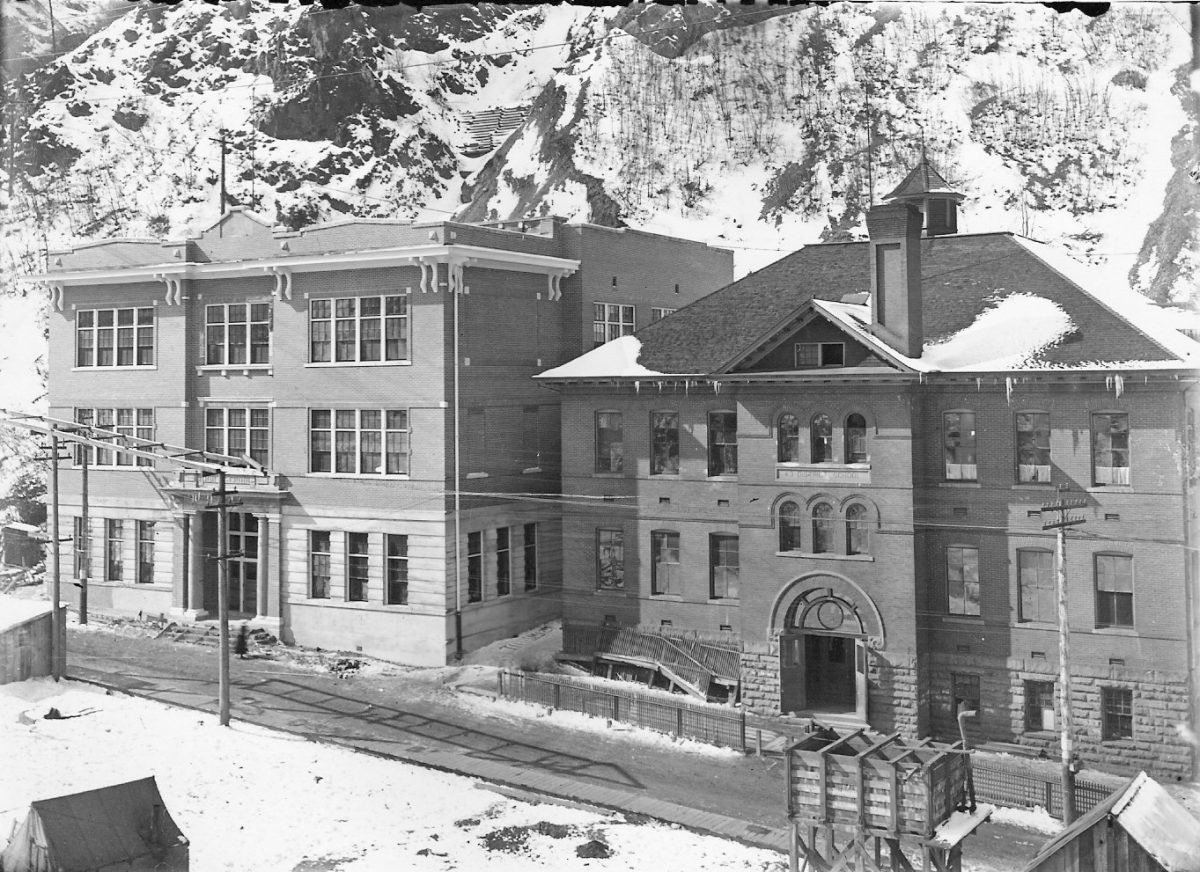BINGHAM HIGH 100 YEARS AGO (First in a series)
1918 INFLUENZA EPIDEMIC AT BINGHAM HIGH
By Scott Crump
To give some perspective to the turbulent times we are currently living in, I thought it would be interesting to look back at what was happening at Bingham High School during the 1918 Influenza Epidemic. The following is taken from the book, Bingham High School–the First Hundred Years (1908-2008).
With the end of the World War I in 1918, Bingham High and the schools in Jordan District were forced to deal with the worldwide influenza epidemic that would kill approximately two times more people than the number who died on the war’s battlefields. Dealing with the spread of contagious diseases was a problem that the Jordan District had been forced to confront since its creation in 1905. In preparation, policies were formulated that dealt with disinfecting and closing schools. These policies reflected the guidelines of the Salt Lake County Health Commission that required certain diseases be reported to the county. Infected children had to be kept away from others until their homes were thoroughly fumigated and the quarantine flag was removed by the Board of Health. Guidelines also stipulated that whenever a house was quarantined for scarlet fever, smallpox, and/or diphtheria, all public-school books had to be turned over to a quarantine inspector. Board of Education resolutions required that, in most cases, all quarantined books be burned. (131)
These policies nearly cost Bingham Principal Arthur L. Willard (1916-1917) a month’s salary. In July 1917, the clerk of the Board of Education discovered that that there was a discrepancy in the book inventory of Bingham High. The Bingham books had been counted twice, with the final tally indicating a loss of books equal to $110. This amount was deducted from Mr. Willard’s final check. Unhappy with the deduction of nearly a month’s salary, Mr. Willard explained to the board members that the loss of books was not wholly his fault. Some of the missing books had been loaned by teachers to students for the summer months, and many of them had been quarantined and later burned. Relating his failure to record the quarantined books, he requested reimbursement for his lost $110. Upon hearing the explanation, the Board granted his request. (132)
The flu epidemic of 1918 came to Bingham in October. The disease spread rapidly, and by the middle of November there were 75 cases within the Bingham town limits and considerably more in other areas throughout Bingham Canyon. On October 9, Bingham’s town doctors met with the town board and suggested that places of public gatherings (i.e. churches, theaters, schools) be closed and that all businesses close at 6:00 p.m. They also requested that the wearing of face masks should be mandatory and that all homes infected with influenza be quarantined. The town board agreed, and the ordinance was communicated to the Jordan School Board. Mr. Aylett, a District director outlined the epidemic’s extent on the entire south valley, and the Board closed all schools on October 12 until further notice. By the end of November, eleven canyon residents had lost their lives, and Bingham Mayor Kelly issued a proclamation that quarantined the entire canyon. The epidemic eased by the end of December. By January 8, there were only three infected Bingham families. (133)
Mr. Aylett appeared before the school board again on January 9, 1919. He reported that there were still 261 cases of the flu in the Jordan District and recommended that schools stay closed. The impact of the flu at this time was devastating, and it was not until the end of January that its effects started to abate valley wide. Some district schools were allowed to open in early January if it appeared as though the epidemic had subsided sufficiently in an area (as it had in Bingham). Attendance gradually increased throughout the Jordan District until Superintendent D. C. Jensen reopened all schools on January 27, with the exception of Butler Elementary. The influenza epidemic ran its course state-wide by the spring of 1919, but not before it left numerous other victims in its deadly wake. (134)

